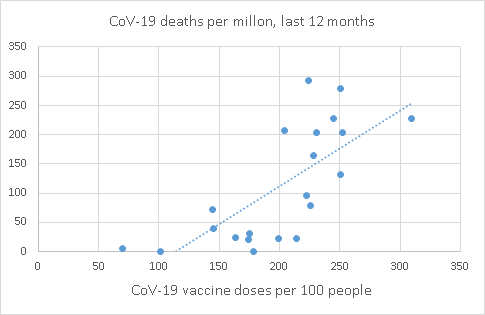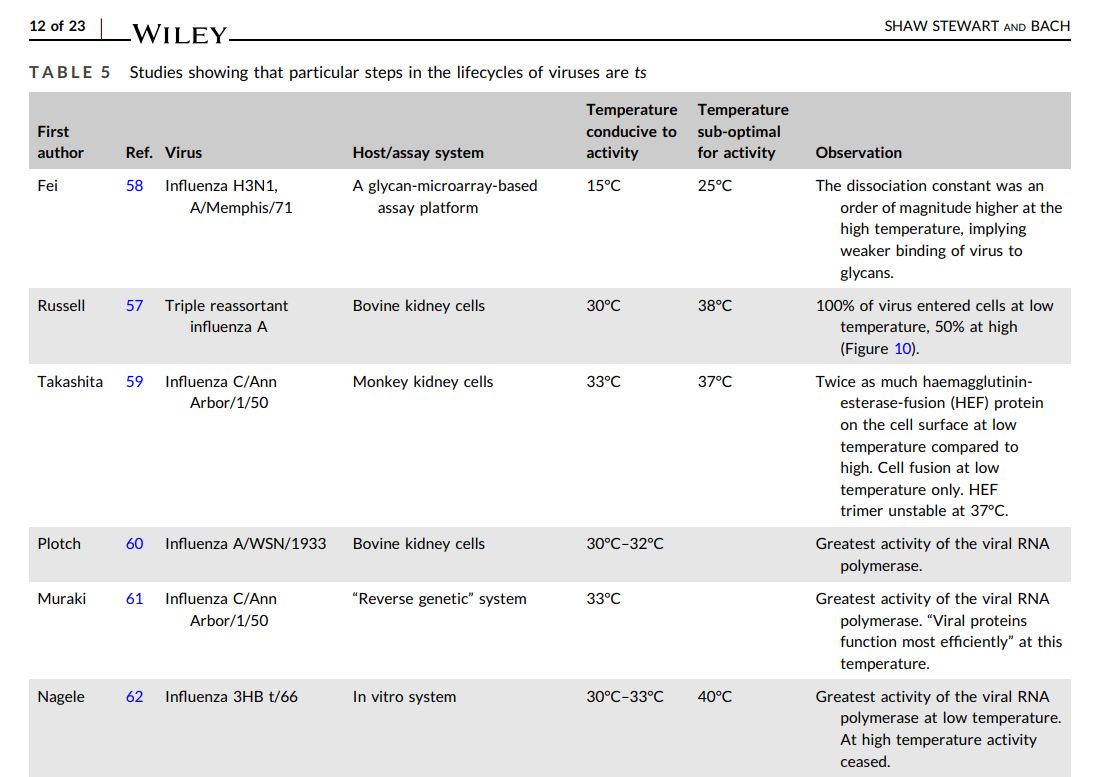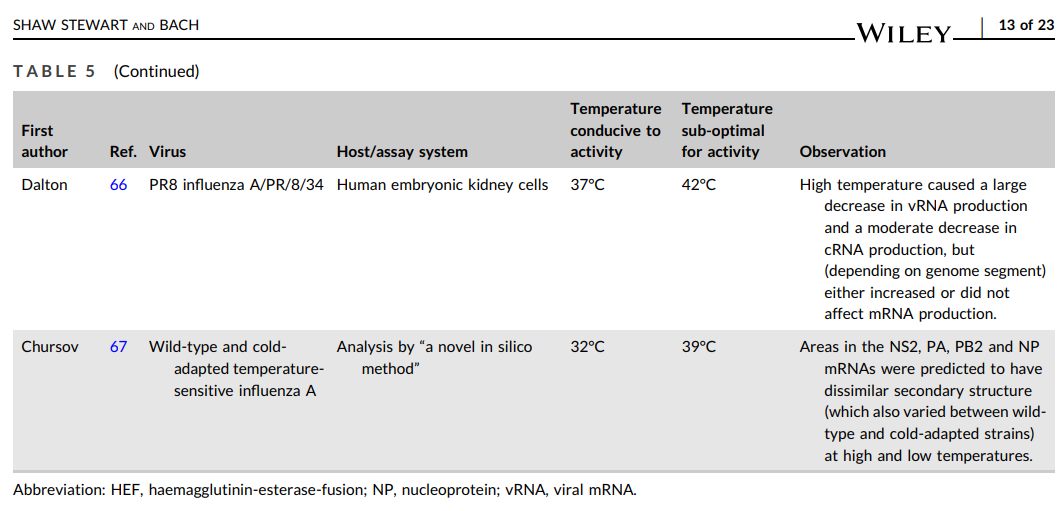(Introduction)
🧵1⃣ Why do we get more colds and flu in winter?
And why are some respiratory viruses more likely to infect the lungs?
@JuliaLBach8 and I have a simple proposal called temperature dependent viral tropism (TDVT)
🧵1⃣ Why do we get more colds and flu in winter?
And why are some respiratory viruses more likely to infect the lungs?
@JuliaLBach8 and I have a simple proposal called temperature dependent viral tropism (TDVT)
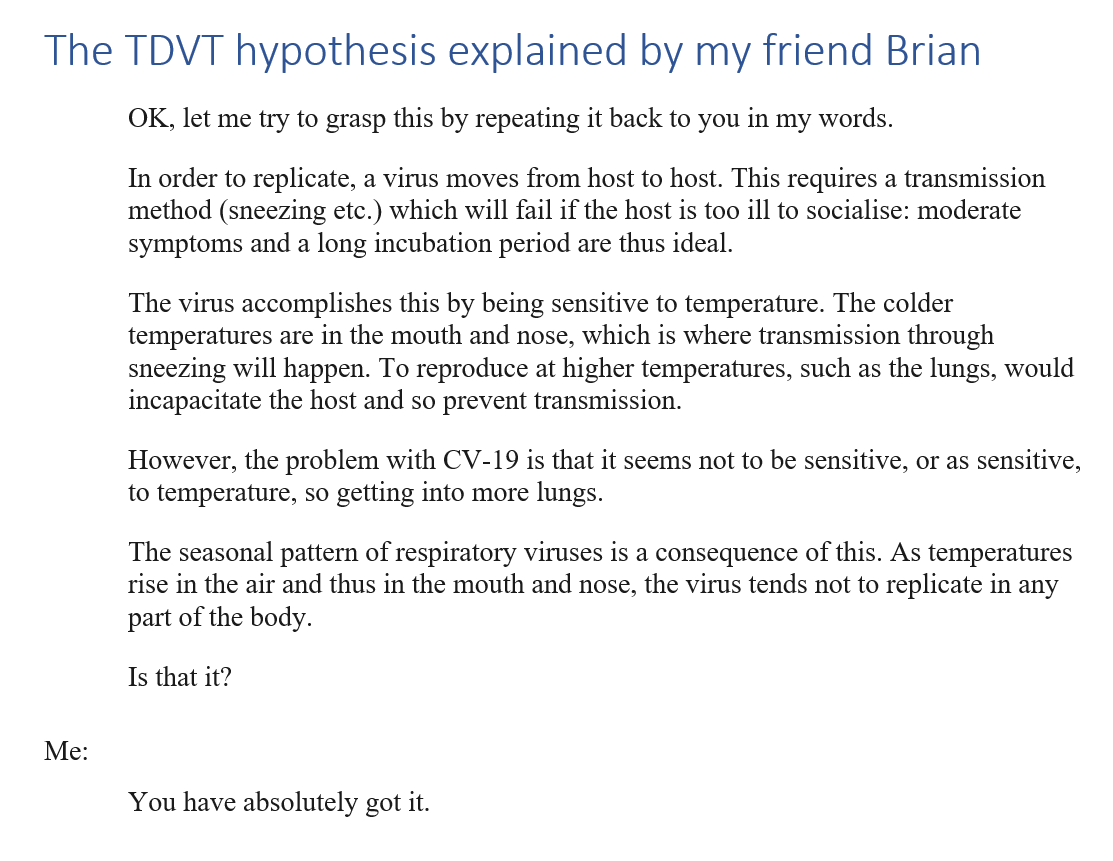
2⃣We suggest that (virtually all) respiratory viruses sense temperature in order to keep out of the lungs, so that they can keep us moving around
doi.org/10.1002/rmv.22…
doi.org/10.1002/rmv.22…
3⃣Remarkably, several recent studies show that CoV-2 is thermally-sensitive (more active at low temp) in cells & animals – just as we predicted!
1. doi.org/10.1016/j.csbj…
2. doi.org/10.1371/journa…
3. doi.org/10.1093/cid/ci…
4. doi.org/10.1371/journa…
1. doi.org/10.1016/j.csbj…
2. doi.org/10.1371/journa…
3. doi.org/10.1093/cid/ci…
4. doi.org/10.1371/journa…

4⃣Seasonality:
Many factors affect colds, flu & C-19 cases
But superimposed on the noise is a 365-day cycle⬇️
In many diverse climates, all respiratory viruses – which are often unrelated - have WINTER seasonality
Other viruses eg rabies, polio are more common summer/variable
Many factors affect colds, flu & C-19 cases
But superimposed on the noise is a 365-day cycle⬇️
In many diverse climates, all respiratory viruses – which are often unrelated - have WINTER seasonality
Other viruses eg rabies, polio are more common summer/variable

5⃣ @JuliaLBach8 and I believe the explanation is simple and it’s what folk wisdom has always told us – we get colds when we’re chilled.
Our review:
doi.org/10.1002/rmv.22…
Our review:
doi.org/10.1002/rmv.22…
6⃣That’s why standing still outside, and shivering outside, are correlated with an increased risk of dying of a respiratory illness. And why wearing a parker (anorak), and sweating outside, are correlated with reduced risk
doi.org/10.1016/S0140-…
doi.org/10.1016/S0140-…
7⃣CoV-2 seems to be less thermally sensitive than eg rhinovirus, because it gets into our lungs more often. However, if you look at the right level (continents) you can see it has retained significant thermal sensitivity because it’s clearly seasonal: 

8⃣It has been suggested that low humidity – or high humidity – are drivers of seasonality
However, when both flu virus & CoV2 are suspended in realistic solutions (ie not salt) humidity has little effect on virus survival in air
doi.org/10.1093/infdis…
doi.org/10.1093/infdis…
However, when both flu virus & CoV2 are suspended in realistic solutions (ie not salt) humidity has little effect on virus survival in air
doi.org/10.1093/infdis…
doi.org/10.1093/infdis…
9⃣ Moreover in eg the UK and the Netherlands respiratory illness is correlated with cold weather, not rainfall, wind, sunshine etc
Lidwell cambridge.org/core/journals/…
Hajat link.springer.com/content/pdf/10…
Lidwell cambridge.org/core/journals/…
Hajat link.springer.com/content/pdf/10…
🔟There’s lots of biochemical evidence for this idea of viral biochemical heat-sensitivity. For example, the “switch” that controls the transition from transcription to replication in influenza is controlled by temperature
doi.org/10.1186/1743-4…


doi.org/10.1186/1743-4…
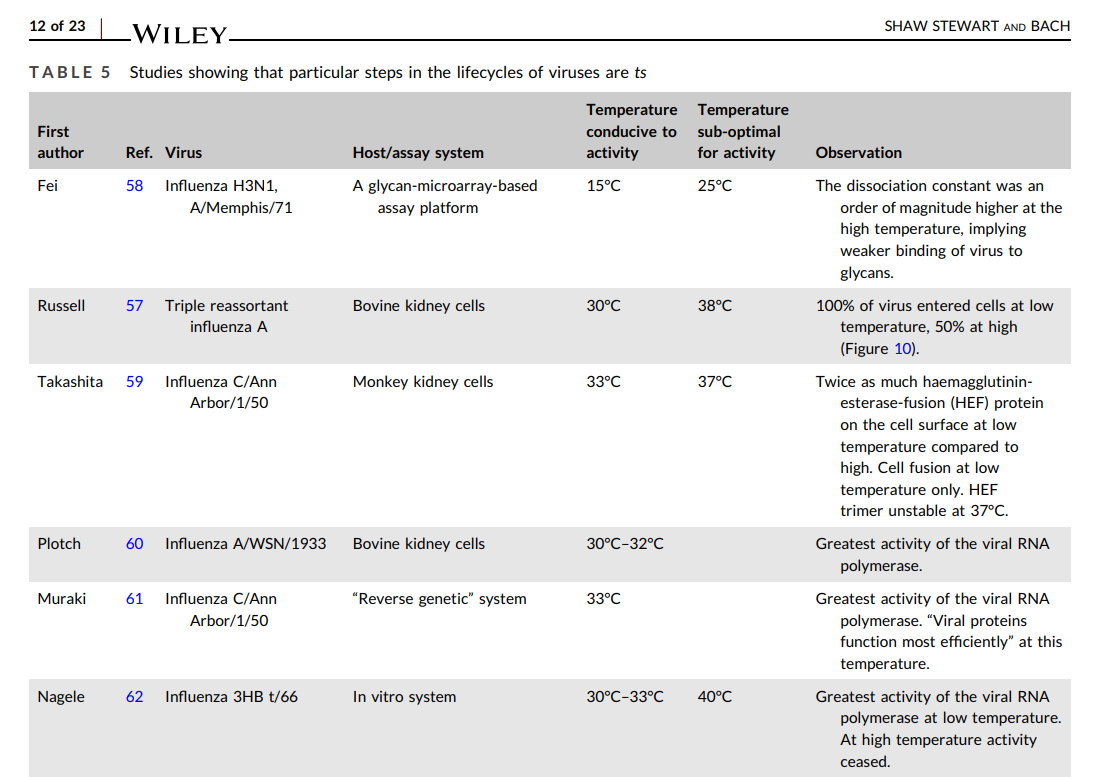


11/ #TDVT has important practical implications. For example a small heater in the bedroom of Covid patients may be helpful 

13/ Introductory seminar - movie if you prefer:
14/ It's very interesting to see that CoV-2 is indeed thermally-sensitive in the lab. We sent this letter to Virologica Sinica - let's see if they get it! ⬇️ 




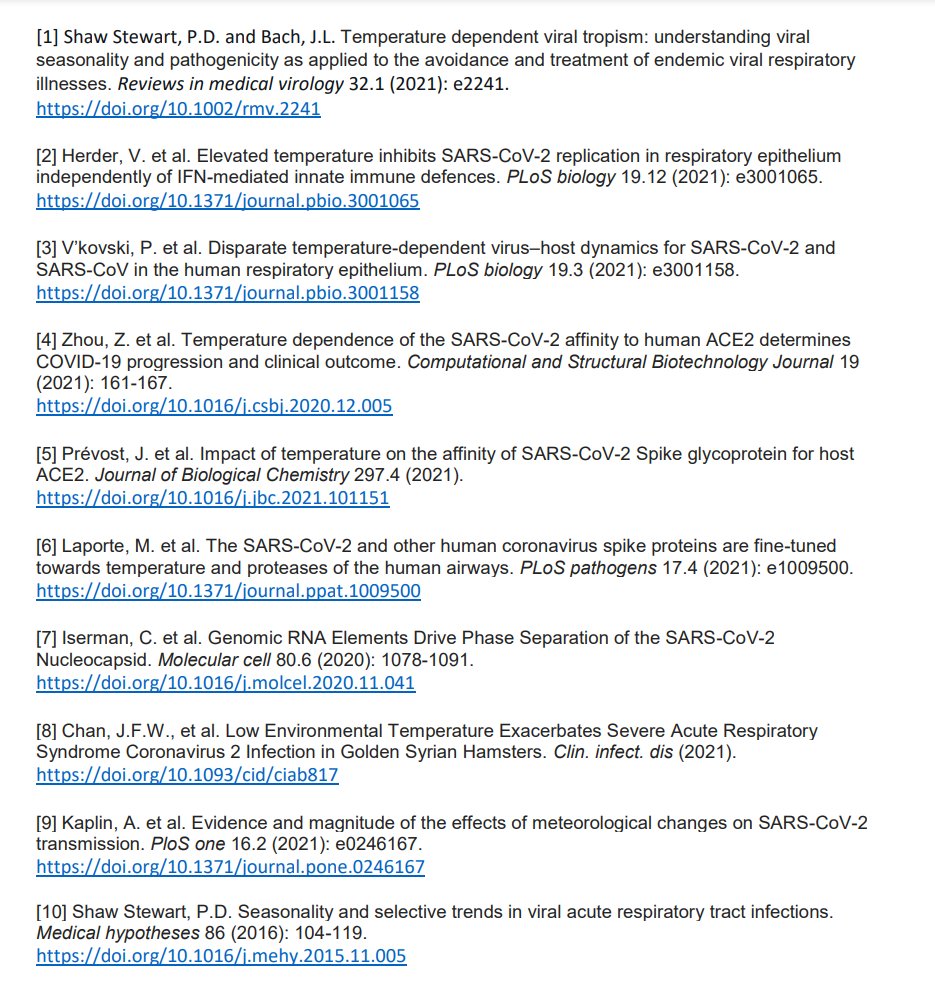
• • •
Missing some Tweet in this thread? You can try to
force a refresh




